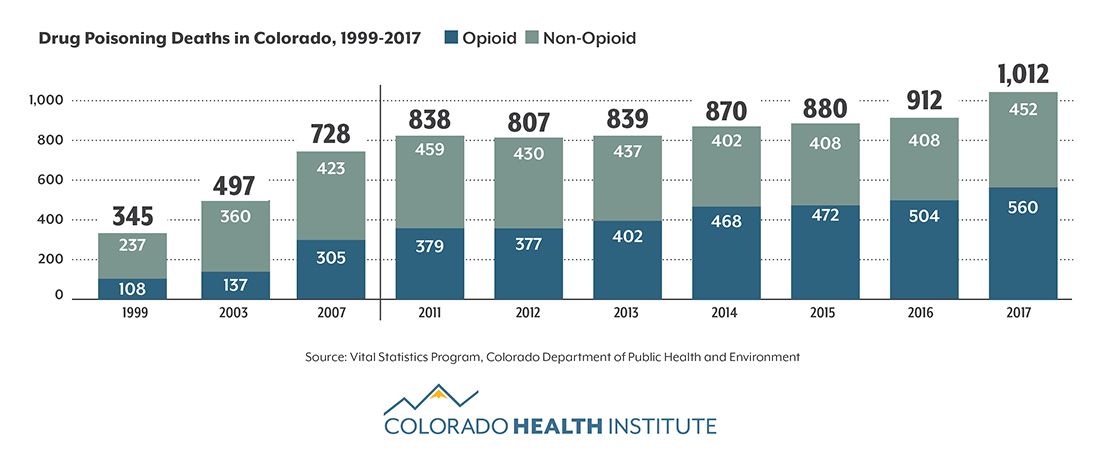The final data are in: 1,012 Coloradans died of drug overdoses in 2017, a record-setting year that follows 912 deaths caused by drugs in 2016.
Surprisingly, 2017 marked the first time Colorado has seen more deaths due to methamphetamine than heroin in the past decade. And the number of fentanyl-related fatalities jumped sharply, according to data released by the Colorado Department of Public Health and Environment Registries and Vital Statistics in mid-August.
CHI has been tracking the opioid epidemic since 2016 as it has increasingly gained the attention of policymakers and public health officials. As data nerds, many of us at CHI were eager to see the newest numbers in order to understand this public health crisis and provide an up-to-date analysis. We are also mindful that each number represents the death of a father or mother, a brother or sister, a cousin or friend.
Our analysts created graphics showing trends in drug overdoses using the new data released this month. The most up-to-date versions are available for public use here.
Prescription Opioid Deaths Continue to Increase, Bucking Expectations
CHI and other observers of trends in substance use predicted that heroin overdoses might increase in 2017 as deaths caused by prescription opioids (a category that includes fentanyl, methadone and other drugs obtained legally through a prescription or illegally) leveled off. Heroin is cheaper than pills and provides a stronger high. We expected these factors would lead to an increase in heroin overdoses.
However, heroin deaths did not increase from 2016 to 2017. But the numbers do show a spike in deaths due to prescription opioids.



